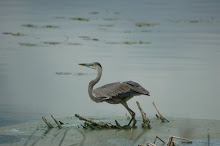Some, however, are marvelously interesting. Take this dragonfly that I captured for my specimen box. How cool a name is "Halloween Pennant". Somebody put some thought into that name. The name was no doubt derived from its coloration, very orange and brown. It could just as easily been named a Fifteen-spotted Pennant . . but why settle for boring when something like "Halloween" is available? It's kind of like signing up for a new YouTube account . . you try the most interesting usernames first just to see what's available. Kudos to the scientist who went bold with this guy's name.

Although this Cicada Killer wasp earned its name for its behavior rather than its appearance, it's a cool name nevertheless. There have been a half dozen or so of them swarming around the stairs leading down to our neighborhood pool, and they send Avery into a tizzy every time she sees one. I've always insisted they wouldn't hurt her, although I didn't know that for certain. This week I decided to figure out what they were once and for all, and it turns out I was mostly right. Cicada killers are said to "very rarely" sting humans, with their primary interest of course being the killing of cicadas to feed to their larvae. How uniquely specialized.

And I know this is random, so please forgive me, but I wondered yesterday why herons haven't ever been ( to my knowledge) the basis for any sayings or idioms relating to their behavior. I watched a Green Heron forage for almost half an hour yesterday, and the patience of these birds amazes me. This particular bird was slowly and deliberately hopping from branch to branch in a willow tree that was growing in a small marshy area. With every hop he'd get closer and closer to the single branch tip where a dragonfly was perching repeatedly. Then, after 10 minutes or so, he got close enough and made his lunge, snagging the dragonfly.
What came next really surprised me. The heron did not eat the dragonfly. Presumably having either paralyzed or killed the bug, the heron flew down to a spot near the edge of the water and stood among the reeds. He took 2 or 3 steps over the next 10 minutes, still holding on to the dragonfly. Then all of a sudden he dropped the dragonfly on to the water and watched as it lay there still. A moment later he struck at the water next to the bait and emerged with a small green frog in his bill. Talk about resourcefulness! And patience to boot. So why is it then that nobody's ever been called "As patient as a heron"?

3 comments:
Those two pictures are super cool, I love seeing that bee upclose with all its detail. Very pretty! And I think you can coin your own cliches whenever you want...sounds like you have a good one.
xoxo
Check out Julie Zickefoose's blog. She did a post (last week I think) about animals that use tools and she cited a green heron as an example. You're so lucky to have seen that! Most folks wouldn't have had the patience to watch that heron so long to see the exciting outcome.
Maybe the expression should be
"the patience of a Corey"
I absolutely despise earwigs.
I agree with Lynne....where can I go to buy some patience? I'm going to start saying the patience of a heron just so I can tell your story!
Post a Comment